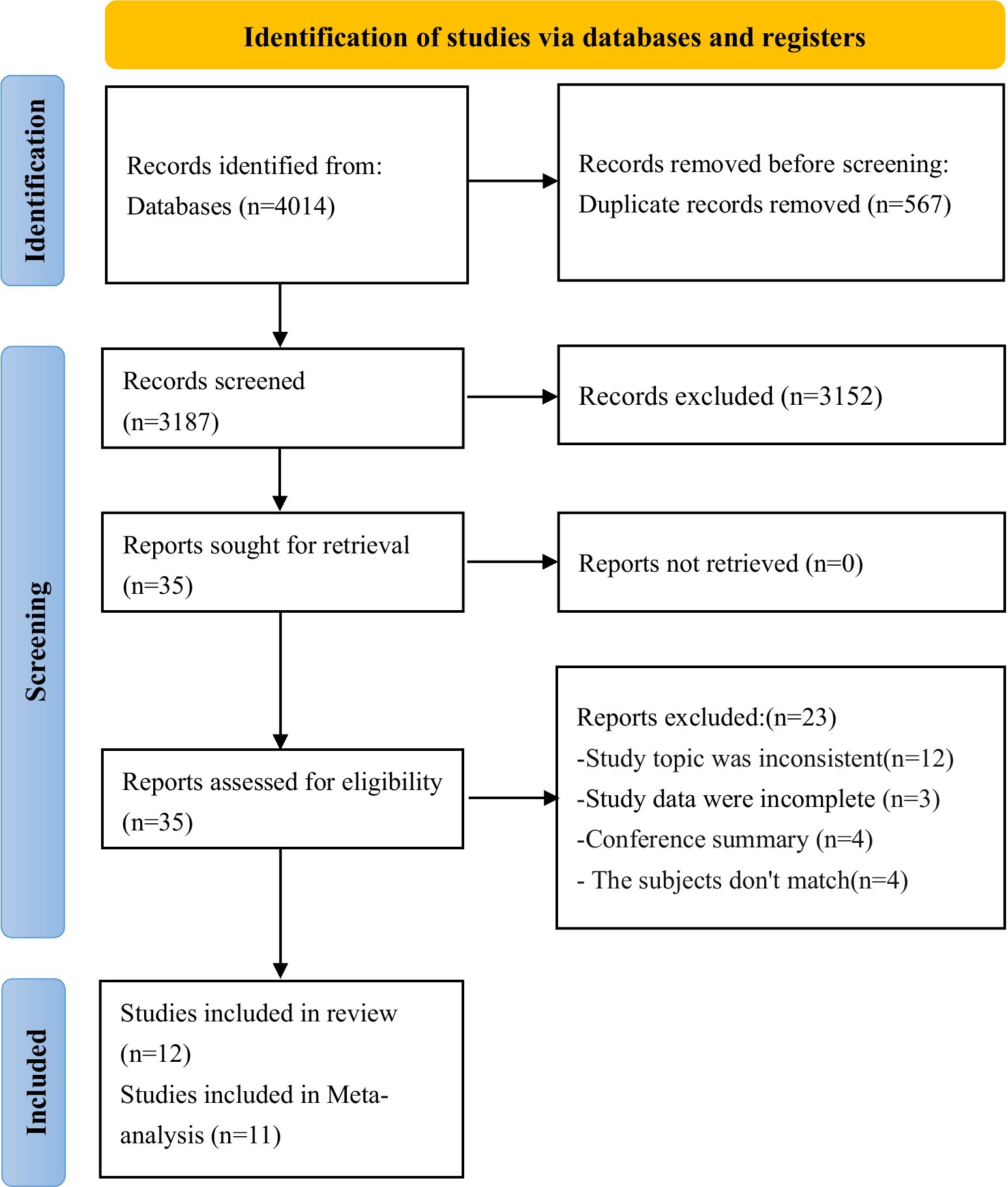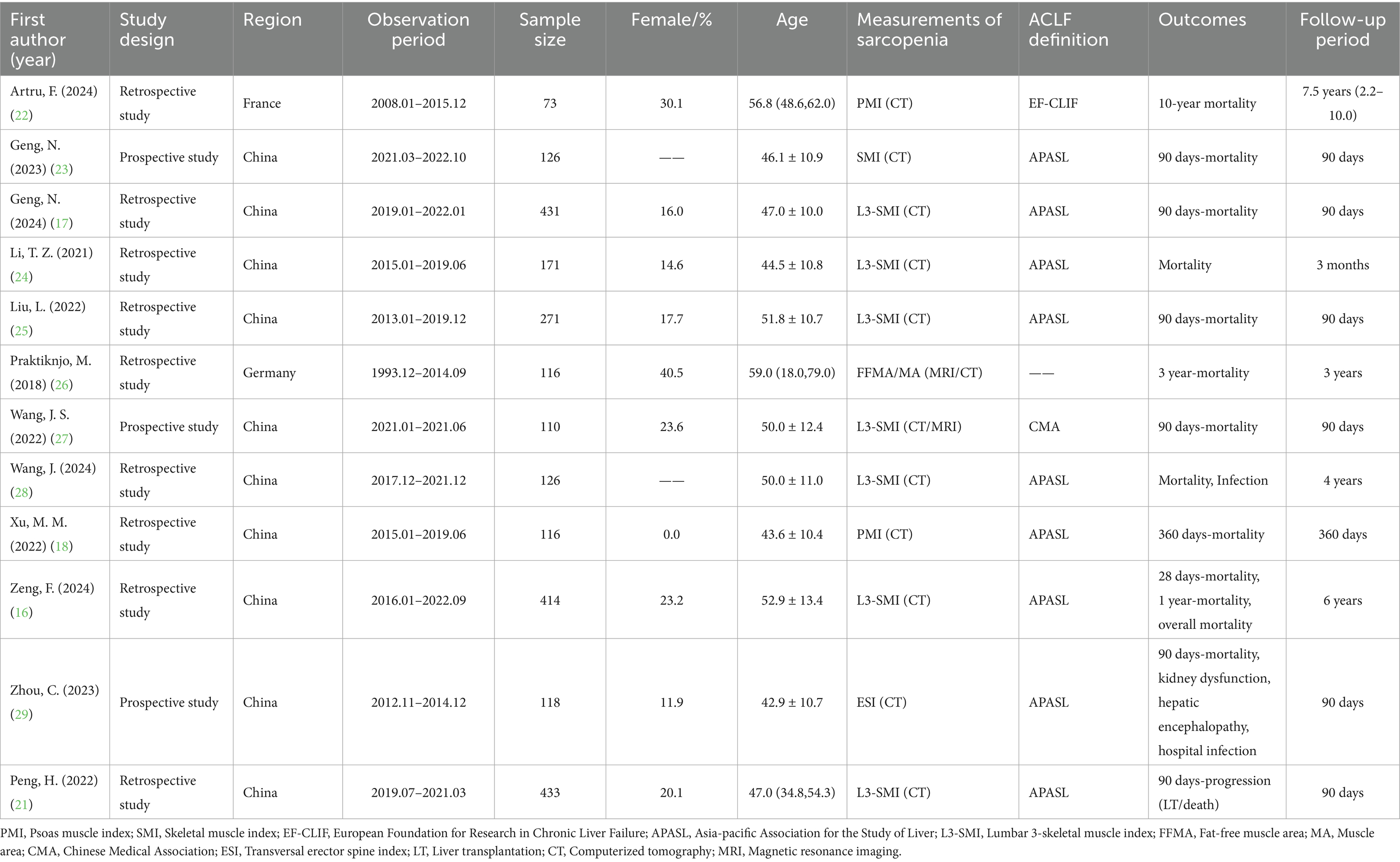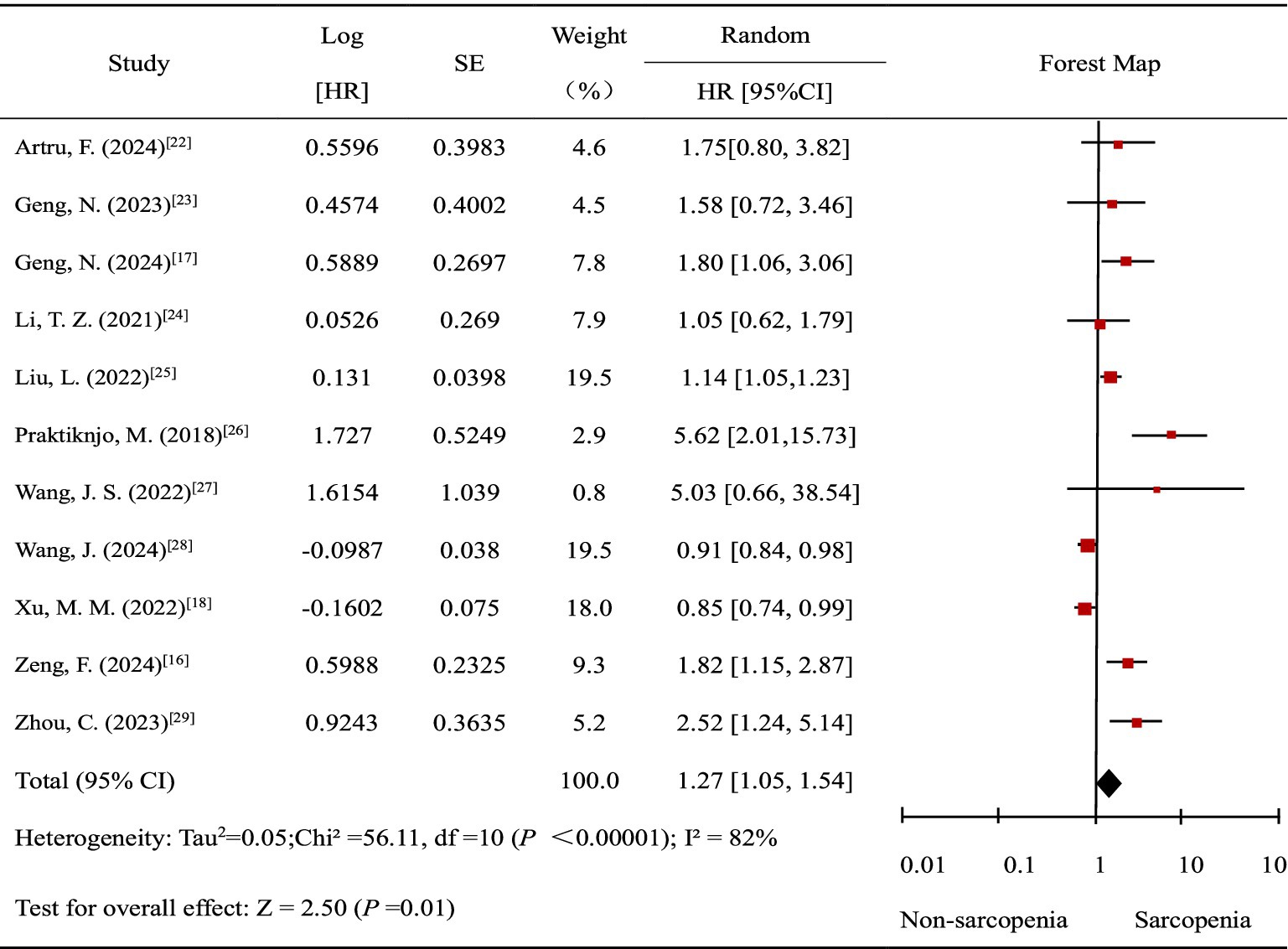- 1Center of Infectious Diseases, West China Hospital/West China School of Nursing, Sichuan University, Chengdu, China
- 2Center of Infectious Diseases, West China Hospital, Sichuan University, Chengdu, China
Objectives: Sarcopenia is an important indicator affecting the prognosis of patients with end-stage liver disease. The purpose of this review is to systematically review all relevant studies to evaluate the impact of sarcopenia on the prognosis of patients with ACLF.
Methods: We systematically searched PubMed, Web of Science, Embase, the Cochrane Library, China Biomedical Literature Service System (CINAHL), China National Knowledge Infrastructure (CNKI), the WeiPu (VIP) and the Wanfang database for relevant articles published on or before August 1, 2024. Two independent reviewers conducted literature screening against predefined inclusion/exclusion criteria.
Results: The systematic review included 12 cohort studies, with a total of 2,505 participants. Of these, 11 studies (2,072 participants) met the criteria for inclusion in the meta-analysis. The meta-analysis demonstrated that sarcopenia is significantly associated with an increased mortality risk in patients with ACLF [HR = 1.27, 95%CI (1.05, 1.54), p < 0.00001]. Subgroup analyses showed that the mortality risk was significantly increased in the subgroup of study with the outcome of short-term mortality [HR = 1.54, 95%CI (1.14, 2.08)], and prospective study [HR = 2.16, 95%CI (1.30, 3.60)].
Conclusion: The meta-analysis of 11 studies (2,072 participants) revealed a significant association between sarcopenia and elevated mortality risk in ACLF patients. However, these findings should be interpreted with caution due to the limited number of included studies and higher heterogeneity in the analysis.
Systematic review registration: CRD42023441039.
Introduction
In 2010, the European Working Group on Sarcopenia in Older People (EWGSOP) defined sarcopenia (1), and the definition was updated by EWGSOP in 2019 (2). Since then, sarcopenia is considered a progressive and generalized skeletal muscle disorder characterized by the gradual loss of muscle strength, mass and function (2). Sarcopenia is formally recognized as a muscle disease with an ICD-10-MC Diagnosis Code (3). It is associated with an increased likelihood of adverse outcomes including falls (4), fractures (5), mobility disorders (6), physical disability (7), and many other adverse outcomes, even mortality (8). As we all know, sarcopenia poses a significant threat to the health and independence of the elderly.
In recent years, sarcopenia in patients with chronic liver disease has received more and more attention. Some studies found that patients with cirrhosis frequently present with sarcopenia, the prevalence of sarcopenia is 40–70% (9). Also, sarcopenia is an important indicator affecting the prognosis of patients with end-stage liver disease (ESLD) (10). Sarcopenia can predict disease progression, complications of cirrhosis [such as the incidence of hepatic encephalopathy (HE)], mortality of cirrhotic patients, long-term outcomes after liver transplantation, and outcomes of patients with hepatocellular carcinoma (HCC) (11–14). Although the prognostic value of sarcopenia in terms of ESLD is known, its impact on the development of acute-on-chronic liver failure (ACLF) is still limited.
Acute-on-chronic liver failure (ACLF) (15) is a clinical syndrome characterized by acute hepatic decompensation in chronic liver disease, with or without cirrhosis and mainly manifests as coagulopathy, jaundice, ascites, and HE. ACLF has the characteristics of rapid disease progression and a high case fatality rate. Therefore, active exploration of indicators determining the prognosis of the patients with ACLF is valuable to guide treatment. Studies have suggested that sarcopenia is significantly associated with both short-term (28 days [HR = 2.05, 95%CI (1.41–3.00), p < 0.01], 90 days [HR = 1.802, 95% CI (1.062–3.060), p = 0.029]) and long-term (1 year [HR = 1.81, 95% CI (1.29–2.54), p < 0.01] and overall [HR = 1.82, 95% CI (1.30–2.55), p < 0.01]) (16, 17) mortality rates in patients with ACLF. Nevertheless, the study of Xu et al. (18) did not find an independent relationship between psoas muscle index (PMI) and 1-year mortality. Current research on the association between sarcopenia and the prognosis of patients with ACLF is controversial.
As far as we can determine, there is a paucity of comprehensive data to explore systematically the impact of sarcopenia on the prognosis of patients with ACLF. Given this background, the main aim of this systematic review is to describe systematically the effects of sarcopenia on the prognosis of patients with ACLF.
Methods
Conduct of the systematic literature review
The systematic review was conducted according to the Preferred Reporting Items for Systematic Review and Meta-Analysis (PRISMA) guidelines (19). The protocol was registered in the International Prospective Register of Systematic Reviews (PROSPERO) (registration number: CRD42023441039).
Definition of sarcopenia
According to the definition of the European Working Group of Sarcopenia in Older People (EWGSOP2) (2), sarcopenia is considered a progressive and generalized skeletal muscle disorder characterized by the gradual loss of muscle strength, mass and function.
Based on previous studies, we included studies that reported sarcopenia of any severity under any definition criteria.
PICOS question and eligibility criteria
Following the PICOS question, we included:
• Participants: patients ≥18 years of age who were diagnosed with ACLF.
• Intervention: presence of sarcopenia using any definition.
• Controls: patients without sarcopenia.
• Outcomes: mortality was the primary outcome, and infection was the secondary outcome. The effect size was presented as the hazard ratio (HR) and 95% confidence interval (CI).
• Study design: a prospective or retrospective cohort study.
We excluded the following studies: conference papers, case reports, letters to the Editor, reviews, studies that did not provide sufficient data, non-Chinese and non-English literature.
Data sources and search strategy
Several relevant databases were comprehensively searched for this systematic review, including PubMed, Web of Science, Embase, the Cochrane Library, the China Biomedical Literature Service System, China Biomedical Literature Service System (CINAHL), China National Knowledge Infrastructure (CNKI), the WeiPu (VIP) and the Wanfang database, from inception to 1 August 2024.
The following search was used in PubMed:
((((liver failure[Title/Abstract]) OR (hepatic failure[Title/Abstract])) OR (acute-on-chronic liver failure[Title/Abstract])) OR (ACLF[Title/Abstract])) OR (end-stage liver disease[Title/Abstract]) OR ((((liver failure[MeSH Terms]) OR (hepatic failure[MeSH Terms])) OR (acute-on-chronic liver failure[MeSH Terms])) OR (end-stage liver disease[MeSH Terms]))
AND
(((((((((((sarcopenia[Title/Abstract]) OR (sarcopenic[Title/Abstract])) OR (muscle loss[Title/Abstract])) OR (muscular atrophy[Title/Abstract])) OR (less muscle disease[Title/Abstract])) OR (muscle wasting[Title/Abstract])) OR (muscle mass[Title/Abstract])) OR (muscle weakness[Title/Abstract])) OR (muscle strength[Title/Abstract])) OR (hand strength[Title/Abstract])) OR (grip strength[Title/Abstract]) OR ((((((((sarcopenia[MeSH Terms]) OR (muscular atrophy[MeSH Terms])) OR (less muscle disease[MeSH Terms])) OR (muscle wasting[MeSH Terms])) OR (muscle mass[MeSH Terms])) OR (muscle weakness[MeSH Terms])) OR (muscle strength[MeSH Terms])) OR (hand strength[MeSH Terms])) OR (grip strength[MeSH Terms])).
Study selection
Two researchers screened the articles and extracted data independently, utilizing EndNote software. Disagreements between researchers were resolved through discussion or consultation with a third reviewer in necessity. Data is extracted from eligible articles using a standardized form. The form included: the first author, publication year, types of study, age, regions, observation period, sample size, percentage of women, definitions and measurements of sarcopenia, ACLF definition, outcomes, follow-up period, reported HR (95%CI), and adjusted variables.
Methodological quality assessment
Two researchers independently evaluated the quality of cohort studies by the Newcastle-Ottawa Scale (NOS) (20). A discussion was made if there was a disagreement. The scale covers three domains and eight items, including the selection of research subjects (4 items, 4 points), comparability between groups (1 item, 2 points), and outcome measurement (3 items, 3 points). The total score for every study was 9. The study was considered moderate to high quality if the score was more than six.
Statistical analysis
The data analysis was conducted using RevMan 5.4 and Stata 12.0. Meta-analysis was performed using a random-effects model to generate a pooled hazard ratio (HR) and 95% confidence interval (CI). When I2 ≥ 50% or p < 0.05, heterogeneity was determined to be statistically significant. To explore the source of heterogeneity in the study, we performed a series of subgroup analyses. In addition, to evaluate publication bias by observing the symmetry of the funnel plot, Begg’s/ Egger’s tests and combined with trim and fill method. Sensitivity analysis was performed by excluding each study to evaluate the stability of the results. For all statistical tests, the test level of meta-analysis was set at α = 0.05.
Results
Description of studies and study population
Figure 1 summarizes the yield of the search process. A total of 4,014 records were identified from the database, including 567 duplicates. Following the removal of duplicates, 3,187 records passed through title and abstract screening, and 35 articles were retained for full-text review. Ultimately, 12 total studies were included in the qualitative and quantitative syntheses, collectively representing approximately 2,505 participants. Of these, 11 studies were identified for meta-analysis and included approximately 2,072 participants. The study of Peng et al. (21) was excluded from the meta-analysis, as its outcomes significantly differed from those reported by other 11 studies.
Table 1 reports the main characteristics of the included studies in the systematic review.
Study quality assessment
The Newcastle–Ottawa Scale (20) was used to assess the risk of bias for the 12 studies included in the systematic analysis, with the results presented in Table 2. Two studies scored 8 or 9 points, indicating a low risk of bias. Ten studies scored 6 or 7 points, indicating a medium risk of bias. Consequently, since all cohort studies achieved a score of 6 or higher, no studies were excluded from the systematic review.
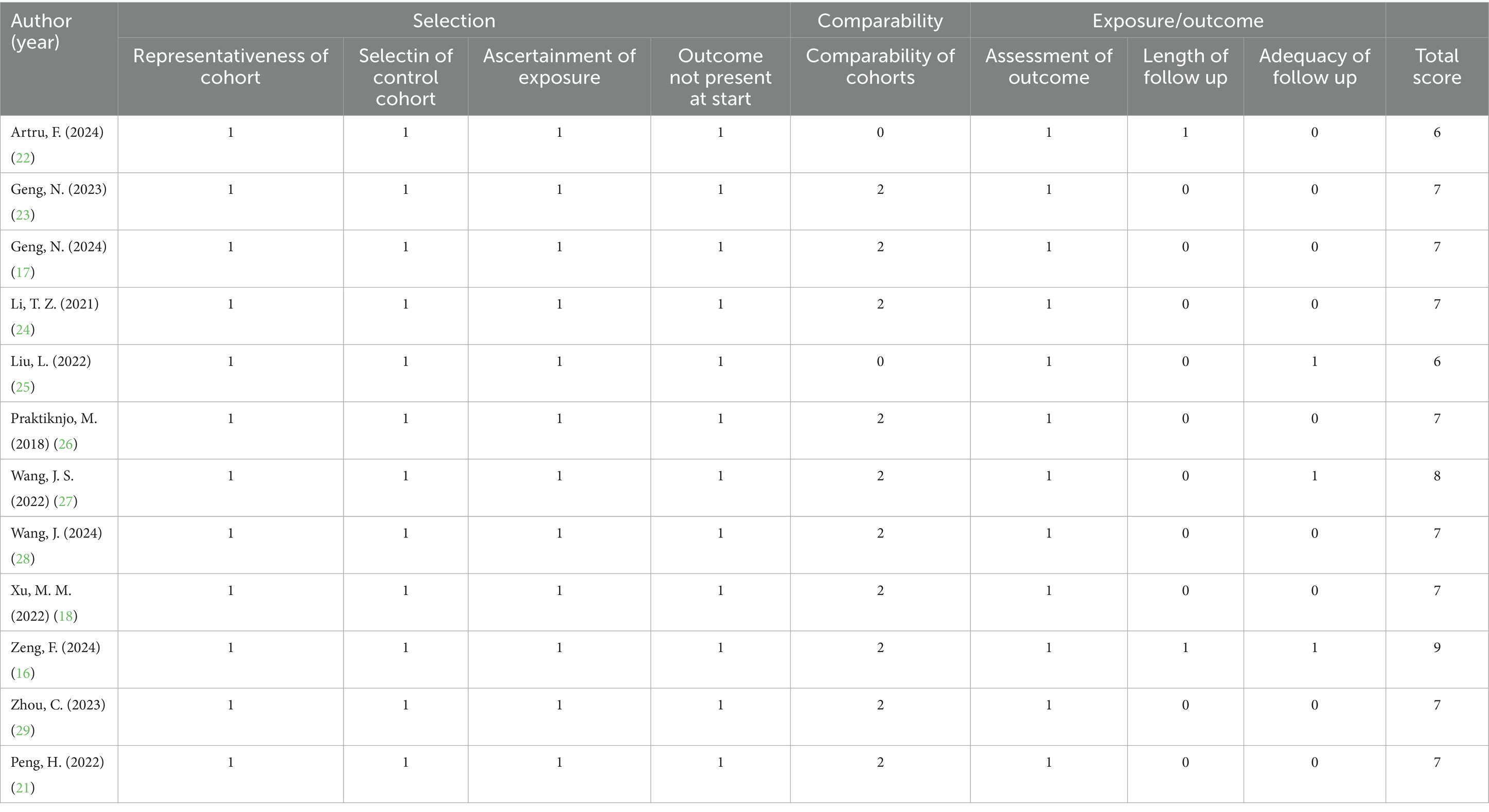
Table 2. Methodological quality score of the included studies based on the Newcastle–Ottawa Scale (NOS) tool.
Meta-analysis
Association between sarcopenia and mortality risk of patients with ACLF
Twelve studies (16–18, 21–29) reported the association between sarcopenia and prognosis of patients with ACLF. Among them, 11 studies (16–18, 22–29) reported the association between sarcopenia and mortality risk of patients with ACLF. Nevertheless, the outcome of the study of Peng et al. (21) was ACLF progression, including death and liver transplantation. Therefore, the study by Peng et al. (21) was excluded from the meta-analysis examining the association between sarcopenia and mortality risk in patients with ACLF. The meta-analysis demonstrated that sarcopenia is significantly associated with an increased mortality risk in patients with ACLF [HR = 1.27, 95%CI (1.05, 1.54), p < 0.00001].
Overall, in comparison to the non-sarcopenic group, the sarcopenic is significantly associated with an increased mortality risk in patients with ACLF [HR = 1.27, 95%CI (1.05, 1.54), p < 0.00001], and the heterogeneity is high (I2 = 82%) (Figure 2).
Subgroup analysis
Subgroup analyses showed that the mortality risk was significantly increased in the study subgroup with short-term mortality outcomes [HR = 1.54, 95%CI (1.14, 2.08)] and prospective study [HR = 2.16, 95%CI (1.30, 3.60)]. Other subgroup analyses did not show a significant association between sarcopenia and the mortality risk.
By conducting subgroup analyses stratified by outcomes, regions, methods for measuring sarcopenia, and sample size, we did not find a significant reduction in heterogeneity, indicating that heterogeneity was not associated with these variables. Heterogeneity was significantly reduced in subgroup analyses of research type, suggesting that heterogeneity might have originated from research type. This may be related to the potential recall bias inherent in retrospective cohort studies compared to prospective cohort studies. Furthermore, the high heterogeneity may also be related to variations in the original studies, including non-standardized definitions of sarcopenia, differences in baseline disease severity among patients, and other potential comorbidities (malnutrition/ inflammation) (Table 3).
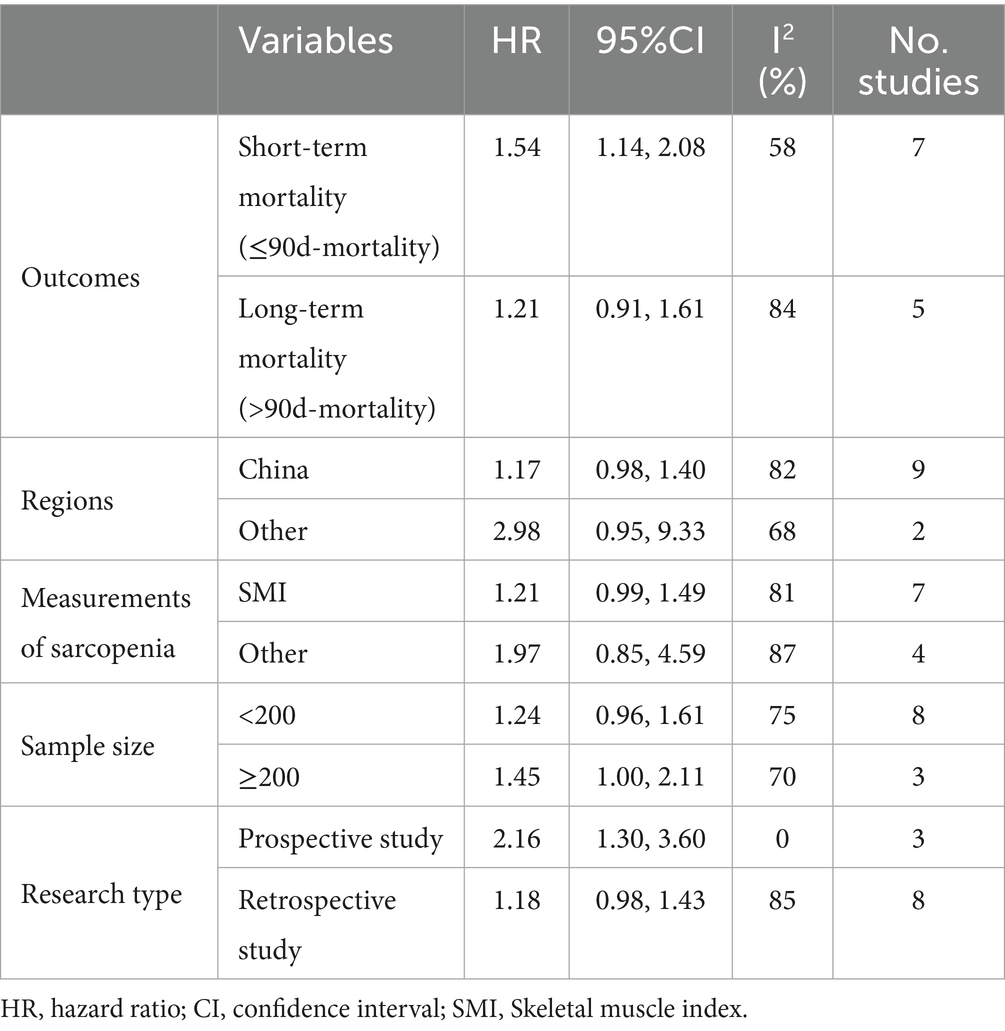
Table 3. Subgroup analyses of the association between sarcopenia and mortality risk of patients with ACLF: Random-effects model.
Sensitivity analysis and publication bias
Through sensitivity analysis, we found that the combined HR did not change significantly for any individual study, thus supporting the meta-analysis results.
Gross examination of the funnel plot revealed potential evidence of publication bias (Figure 3). Nevertheless, no significant publication bias was found by Begg’s test (p = 0.533 > 0.05) and Egger’s test (p = 0.150 > 0.05). In addition, after adjusting for publication bias using the trim-and-fill method, the originally significant positive result became non-significant [HR = 1.046, 95%CI (0.873–1.253), p = 0.627 > 0.05]. Consequently, the study findings may be influenced by publication bias, and additional high-quality, large-scale investigations are warranted to validate the effect size.
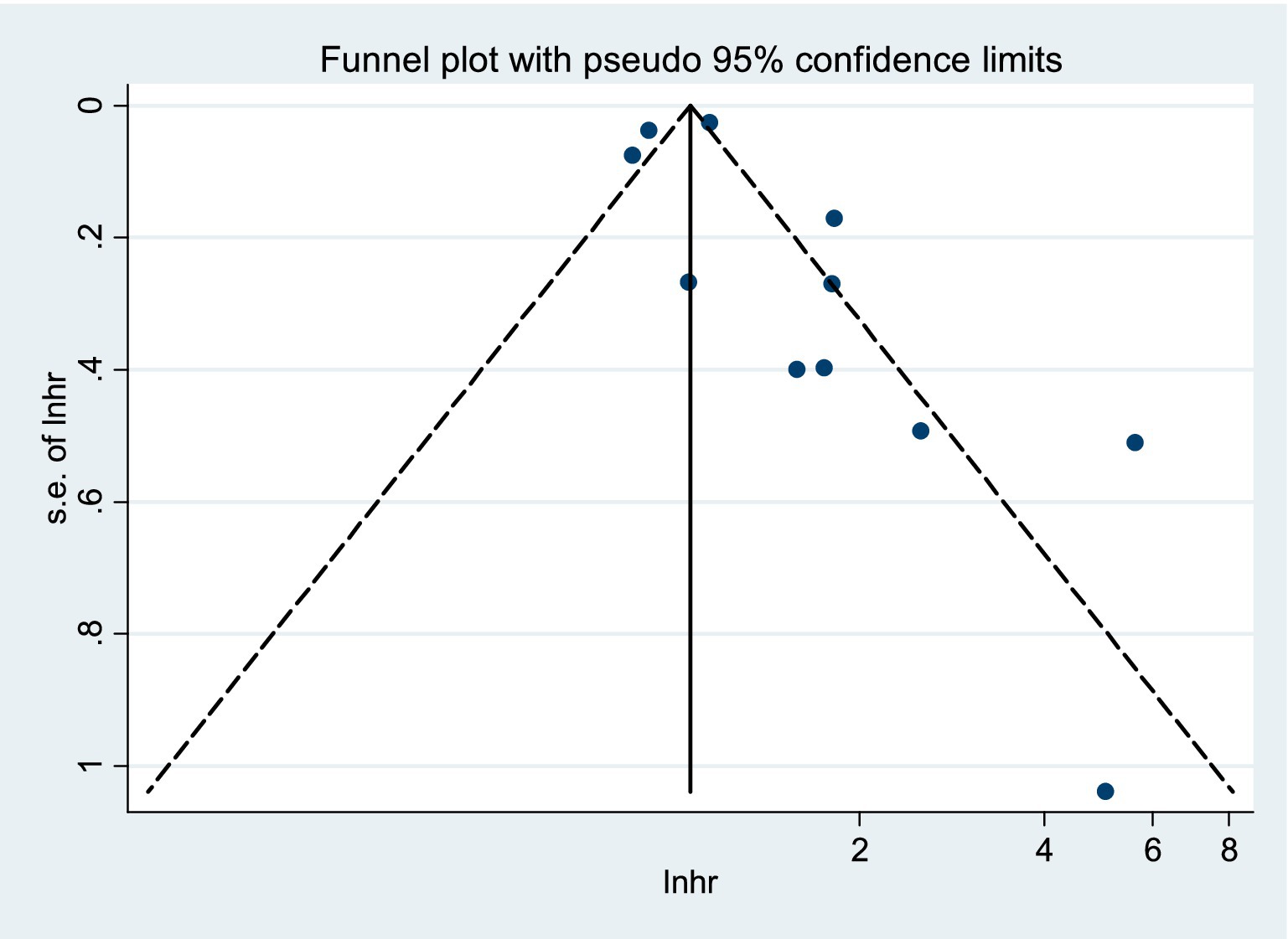
Figure 3. Hazard ratio (HR) of the association between sarcopenia and mortality of patients with ACLF.
Descriptive analysis of the association between sarcopenia and infection of patients with ACLF
In the 12 included studies, only 2 cohort studies (28, 29) reported infection-related outcomes.
Of these, the research of Wang et al. (28) suggested that low L3-SMI is an independent risk factor for the development of infections and significantly influences [OR = 0.89, 95%CI (0.81–0.97), p = 0.011]. However, Zhou, et al. (29) found no significant difference in the incidence of in-hospital infections between patients with low ESI and those with ACLF [HR = 1.62, 95%CI (0.6–3.08), p = 0.138]. Therefore, the association between sarcopenia and infection in patients with ACLF remains unclear. Further research is necessary to elucidate this association.
Discussion
Principal findings
The systematic review and meta-analysis reviewed data from 12 cohort studies and analyzed the effect of sarcopenia on the prognosis of patients with ACLF. Our meta-analysis found that sarcopenia is significantly associated with an increased mortality risk in patients with ACLF. However, we did not find a significant association between sarcopenia and the risks of infection in patients with ACLF.
Potential mechanisms
In recent years, an increasing number of studies have been conducted to explore the association between sarcopenia and other diseases, such as chronic liver disease (30), neoplastic diseases (31), and liver transplantation (32), et al. Sarcopenia is closely associated with the prognosis of these diseases. However, few studies have specifically examined the effect of sarcopenia on patients with ACLF. Currently, the mechanisms through which sarcopenia influences the prognosis of patients with ACLF remain unclear.
The mechanisms by which sarcopenia influences the prognosis of patients with ACLF may be attributable to systemic inflammation, and hyperammonemia, et al. First, systemic inflammation is the key contributor to the loss of skeletal muscle and its functionality (33). Also, Systemic inflammation is one of the features of ACLF and is intimately associated with the prognosis of patients (34). For patients with ACLF, various risk factors can lead to acute hepatic decompensation, which in turn causes systemic inflammation based on chronic liver disease. ACLF often manifests as acute systemic inflammatory response syndrome (35). Of these, pro-inflammatory factors [tumor necrosis factor (TNF-α), interleukin (IL-1β), and interferon (IFN-γ)] (33) can inhibit the expression of growth hormone and promote the occurrence of sarcopenia. Meanwhile, pro-inflammatory factors also activate the ubiquitin-proteasome pathway, causing protein degradation, leading to sarcopenia (36). When patients with ACLF are complicated by sarcopenia, their bodies are still unable to cope with the catabolic changes, even if liver function is compensated (37). Therefore, sarcopenia may be a manifestation of potential systemic inflammation, which could influence the prognosis of patients with ACLF. Furthermore, Ye et al. (38) conducted a cohort study of 140 patients with ACLF and suggested that white blood cells (WBC) were significantly elevated in patients with sarcopenia, which indirectly confirmed the potential relationship among sarcopenia-inflammation-ACLF. Second, as a common complication of patients with ACLF, hyperammonemia may reduce muscle protein synthesis by upregulating myostatin production (39). Finally, patients with ACLF often experience a reduced oral intake due to complications of the portal system and impaired liver function (40). This diminished dietary protein intake is also among the contributing factors to the onset of sarcopenia. Also, systemic inflammation and hyperammonaemia can contribute to a heightened catabolic state and collectively lead to malnutrition and sarcopenia (16).
Mortality
As we all know, patients with ACLF have a very high short-term mortality when treated without liver transplantation (41). Our study found that the short-term mortality risk (≤90 days mortality) [HR = 1.54, (1.14, 2.08)] is higher than the total mortality risk [HR = 1.27, 95%CI (1.05, 1.54)] of patients with ACLF who are complicated by sarcopenia. Therefore, sarcopenia may be a reliable indicator to predict the prognosis of patients with ACLF in the future. The death of patients with ACLF is associated with multi-organ failure. Sarcopenia reduces the body’s compensatory capacity, making patients more susceptible to severe complications such as hepatorenal syndrome and hepatic encephalopathy, thereby significantly increasing 28-day and 90-day mortality rates. Studies suggested that the mortality of ACLF increased with the increasing incidence of organ failure. Patients with one organ failure have a mortality rate of about 20% within 28 days, while those with three organ failures have a mortality rate of more than 70% (42). Liver transplantation has been demonstrated to improve the survival rates of patients with ACLF significantly, but the applicability and feasibility of liver transplantation are limited by various factors.
Infection
Infection was deemed to be a major cause of increased mortality in patients with ACLF (43). Identification of infection-related risk factors in ACLF patients could facilitate the development of multidisciplinary therapeutic strategies, thereby potentially improving clinical outcomes and reducing mortality. A recent study shows that sarcopenia is a highly predictive nutritional indicator for the occurrence of hospital-acquired infections (44). The study of Wang et al. (28) suggested that sarcopenia is an independent risk factor for infections in ACLF patients. The elevated infection risk associated with sarcopenia may be mediated through immune system compromise, as muscle wasting has been shown to impair both innate and adaptive immune responses in chronic disease states (45). However, the study of Zhou et al. (29) found no significant difference in the incidence of in-hospital infections between patients with low ESI and those with ACLF. Differences across studies stems from multiple sources, including the operational definition and measurement modality used for sarcopenia, baseline demographic and clinical characteristics of the enrolled populations, sample size, and other methodological factors. Thus, the causal relationship between sarcopenia and infection—whether sarcopenia predisposes to infections or infections accelerate muscle wasting—remains to be elucidated through prospective studies. Clarifying this bidirectional association could inform novel therapeutic and preventive strategies.
Strengths and limitations
The current meta-analysis has the following strengths. First, according to our knowledge, our research is the first meta-analysis to evaluate the effects of sarcopenia on the prognosis of patients with ACLF. Second, our study strictly adhered to the Preferred Reporting Items for Systematic Reviews and Meta-Analysis (PRISMA) 2020 guidelines. Finally, we used several methods to fully test the stability of the results, encompassing sensitivity analyses and subgroup analyses.
Besides, our research still presents some potential limitations. First, these findings should be interpreted with caution due to the limited number of included studies and higher heterogeneity in the analysis. Besides, we conducted further analysis to evaluate the source of this heterogeneity. The subgroup analysis found that interstudy heterogeneity may be associated with research type. Second, we cannot extract the HR from the study about sarcopenia and infection in ACLF patients. Therefore, we only conducted a descriptive analysis to explore the association between sarcopenia and infection in ACLF patients. Third, there may be potential publication bias in our meta-analysis. Finally, the majority of the studies we included were retrospective cohort studies, which means we cannot infer the causal relationship between sarcopenia and the mortality of patients with ACLF. We recommend that future high-quality prospective studies be conducted to validate our findings.
Conclusion
Our meta-analysis showed that sarcopenia is significantly associated with the mortality risk of patients with ACLF. Sarcopenia may increase the risk of mortality in patients with ACLF. Nevertheless, sarcopenia screening is not currently recommended for inclusion in prognostic models for ACLF. And, we must carefully interpret the result because the number of studies included is small. The study’s findings underscore the importance of recognizing sarcopenia among patients with ACLF, thereby heightening clinicians’ awareness of its prognostic implications and guiding interventions to improve outcomes.
Author contributions
WL: Writing – original draft, Resources, Software, Formal analysis, Visualization, Project administration, Supervision, Validation, Conceptualization, Data curation, Methodology, Writing – review & editing. RD: Resources, Writing – review & editing, Funding acquisition, Methodology. YL: Data curation, Conceptualization, Writing – original draft, Formal analysis. HL: Conceptualization, Data curation, Funding acquisition, Methodology, Resources, Writing – review & editing. FC: Writing – original draft, Data curation, Supervision. JZ: Data curation, Writing – review & editing. ML: Writing – review & editing, Data curation. QL: Data curation, Writing – original draft. YM: Data curation, Writing – original draft. LZ: Writing – original draft, Data curation.
Funding
The author(s) declare that no financial support was received for the research and/or publication of this article.
Conflict of interest
The authors declare that the research was conducted in the absence of any commercial or financial relationships that could be construed as a potential conflict of interest.
Generative AI statement
The authors declare that no Gen AI was used in the creation of this manuscript.
Any alternative text (alt text) provided alongside figures in this article has been generated by Frontiers with the support of artificial intelligence and reasonable efforts have been made to ensure accuracy, including review by the authors wherever possible. If you identify any issues, please contact us.
Publisher’s note
All claims expressed in this article are solely those of the authors and do not necessarily represent those of their affiliated organizations, or those of the publisher, the editors and the reviewers. Any product that may be evaluated in this article, or claim that may be made by its manufacturer, is not guaranteed or endorsed by the publisher.
References
1. Cruz-Jentoft, AJ, Baeyens, JP, Bauer, JM, Boirie, Y, Cederholm, T, Landi, F, et al. Sarcopenia: European consensus on definition and diagnosis: report of the European working group on sarcopenia in older people. Age Ageing. (2010) 39:412–23. doi: 10.1093/ageing/afq034
2. Cruz-Jentoft, AJ, Bahat, G, Bauer, J, Boirie, Y, Bruyère, O, Cederholm, T, et al. Sarcopenia: revised European consensus on definition and diagnosis. Age Ageing. (2019) 48:601–1. doi: 10.1093/ageing/afz046
3. Vellas, B, Fielding, RA, Bens, C, Bernabei, R, Cawthon, PM, Cederholm, T, et al. Implications of ICD-10 for sarcopenia clinical practice and clinical trials: report by the international conference on frailty and sarcopenia research task force. J Frailty Aging. (2018) 7:2–9. doi: 10.14283/jfa.2017.30
4. Bischoff-Ferrari, HA, Orav, JE, Kanis, JA, Rizzoli, R, Schlögl, M, Staehelin, HB, et al. Comparative performance of current definitions of sarcopenia against the prospective incidence of falls among community-dwelling seniors age 65 and older. Osteoporos Int. (2015) 26:2793–802. doi: 10.1007/s00198-015-3194-y
5. Schaap, LA, van Schoor, NM, Lips, P, and Visser, M. Associations of sarcopenia definitions, and their components, with the incidence of recurrent falling and fractures: the longitudinal aging study Amsterdam. J Gerontol A Biol Sci Med Sci. (2018) 73:1199–204. doi: 10.1093/gerona/glx245
6. Morley, JE, Abbatecola, AM, Argiles, JM, Baracos, V, Bauer, J, Bhasin, S, et al. Sarcopenia with limited mobility: an international consensus. J Am Med Dir Assoc. (2011) 12:403–9. doi: 10.1016/j.jamda.2011.04.014
7. Janssen, I, Baumgartner, RN, Ross, R, Rosenberg, IH, and Roubenoff, R. Skeletal muscle cutpoints associated with elevated physical disability risk in older men and women. Am J Epidemiol. (2004) 159:413–21. doi: 10.1093/aje/kwh058
8. De Buyser, SL, Petrovic, M, Taes, YE, Toye, KR, Kaufman, JM, Lapauw, B, et al. Validation of the FNIH sarcopenia criteria and SOF frailty index as predictors of long-term mortality in ambulatory older men. Age Ageing. (2016) 45:603–8. doi: 10.1093/ageing/afw071
9. Carey, EJ, Lai, JC, Sonnenday, C, Tapper, EB, Tandon, P, Duarte‐Rojo, A, et al. A north American expert opinion statement on sarcopenia in liver transplantation. Hepatology. (2019) 70:1816–29. doi: 10.1002/hep.30828
10. Allen, SL, Quinlan, JI, Dhaliwal, A, Armstrong, MJ, Elsharkawy, AM, Greig, CA, et al. Sarcopenia in chronic liver disease: mechanisms and countermeasures. Am J Physiol Gastrointest Liver Physiol. (2020) 320:G241–57. doi: 10.1152/ajpgi.00373.2020
11. Durand, F, Buyse, S, Francoz, C, Laouénan, C, Bruno, O, Belghiti, J, et al. Prognostic value of muscle atrophy in cirrhosis using psoas muscle thickness on computed tomography. J Hepatol. (2014) 60:1151–7. doi: 10.1016/j.jhep.2014.02.026
12. Montano-Loza, AJ, Meza-Junco, J, Prado, CM, Lieffers, JR, Baracos, VE, Bain, VG, et al. Muscle wasting is associated with mortality in patients with cirrhosis. Clin Gastroenterol Hepatol. (2012) 10:166–73. doi: 10.1016/j.cgh.2011.08.028
13. Kim, G, Kang, SH, Kim, MY, and Baik, SK. Prognostic value of sarcopenia in patients with liver cirrhosis: a systematic review and meta-analysis. PLoS One. (2017) 12:e0186990. doi: 10.1371/journal.pone.0186990
14. Salman, MA, Omar, HSE, Mikhail, HMS, Tourky, M, El-Ghobary, M, Elkassar, H, et al. Sarcopenia increases 1-year mortality after surgical resection of hepatocellular carcinoma. ANZ J Surg. (2020) 90:781–5. doi: 10.1111/ans.15647
15. Sarin, SK, Choudhury, A, Sharma, MK, Maiwall, R, Al Mahtab, M, Rahman, S, et al. Acute-on-chronic liver failure: consensus recommendations of the Asian Pacific association for the study of the liver (APASL): an update. Hepatol Int. (2019) 13:353–90. doi: 10.1007/s12072-019-09946-3
16. Zeng, F, Jiang, W, Chang, X, Yang, F, Luo, X, Liu, R, et al. Sarcopenia is associated with short- and long-term mortality in patients with acute-on-chronic liver failure. J Cachexia Sarcopenia Muscle. (2024) 15:1473–82. doi: 10.1002/jcsm.13501
17. Geng, N, Kong, M, Zhang, J, Chen, H, Xu, M, Song, W, et al. Association of myosteatosis with short-term outcomes in patients with acute-on-chronic liver failure. Sci Rep. (2024) 14:13609. doi: 10.1038/s41598-024-64420-x
18. Xu, M, Li, T, Kong, M, Geng, N, Song, W, Guo, G, et al. Psoas muscle index can be used to predict long-term mortality in young male patients with acute-on-chronic liver failure. Front Nutr. (2022) 9:811826. doi: 10.3389/fnut.2022.811826
19. Page, MJ, McKenzie, JE, Bossuyt, PM, Boutron, I, Hoffmann, TC, Mulrow, CD, et al. The PRISMA 2020 statement: an updated guideline for reporting systematic reviews. Syst Rev. (2021) 10:89. doi: 10.1186/s13643-021-01626-4
20. Wells, GA, Shea, B, O’Connell, D, and Peterson, J, The Newcastle-Ottawa scale (NOS) for assessing the quality of nonrandomised studies in Meta analyses. (2023). Available online at: http://www.ohri.ca/programs/clinical_epidemiology/oxford.asp. (Accessed August 2023).
21. Peng, H, Zhang, Q, Luo, L, Lei, S, Xiong, T, Long, L, et al. A prognostic model of acute-on-chronic liver failure based on sarcopenia. Hepatol Int. (2022) 16:964–72. doi: 10.1007/s12072-022-10363-2
22. Artru, F, Sacleux, SC, Ursic-Bedoya, J, Ntandja Wandji, LC, Lutu, A, L'Hermite, S, et al. Long-term outcome following liver transplantation of patients with ACLF grade 3. J Hepatol. (2024) 82:62–71. doi: 10.1016/j.jhep.2024.06.039
23. Geng, N, Kong, M, Chen, H, Zhang, J, Xu, M, Song, W, et al. Muscle function is superior to muscle mass in predicting 90-day mortality in patients with acute-on-chronic liver failure: a prospective study. Nutrition. (2024) 118:112290. doi: 10.1016/j.nut.2023.112290
24. Li, T, Xu, M, Kong, M, Song, W, Duan, Z, and Chen, Y. Use of skeletal muscle index as a predictor of short-term mortality in patients with acute-on-chronic liver failure. Sci Rep. (2021) 11:12593. doi: 10.1038/s41598-021-92087-1
25. Liu, L, Wang, H, Wen, P, Cai, JJ, Lian, J, Xu, BG, et al. Application value of model for end-stage liver disease-sarcopenia score for short-term prognostic evaluation in patients with acute-on-chronic liver failure. Chin J Infect Dis. (2022) 40:613–9. doi: 10.3760/cma.j.cn311365-20211225-00455
26. Praktiknjo, M, Book, M, Luetkens, J, Pohlmann, A, Meyer, C, Thomas, D, et al. Fat-free muscle mass in magnetic resonance imaging predicts acute-on-chronic liver failure and survival in decompensated cirrhosis. Hepatology. (2018) 67:1014–26. doi: 10.1002/hep.29602
27. Wang, JS. To explore the short-term prognosis of sarcopenia in patients with acute-on-chronic liver failure. J Chongqing Med Univ. (2022). doi: 10.27674/d.cnki.gcyku.2022.000683
28. Wang, J, Bai, J, Wang, H, Xu, G, Yao, R, Li, J, et al. Relationship between skeletal muscle index at the third lumbar vertebra with infection risk and long-term prognosis in patients with acute-on-chronic liver failure. Front Nutr. (2024) 10:1327832. doi: 10.3389/fnut.2023.1327832
29. Zhou, C, Liu, Y, Liang, X, Zhang, N, He, T, Zhang, J, et al. A novel imaging index for predicting adverse progression in acute-on-chronic liver failure related to hepatitis B virus: the low erector spine index. BMC Gastroenterol. (2023) 23:367. doi: 10.1186/s12876-023-02995-x
30. Wu, CH, Liang, PC, Hsu, CH, Chang, FT, Shao, YY, and Ting-Fang Shih, T. Total skeletal, psoas and rectus abdominis muscle mass as prognostic factors for patients with advanced hepatocellular carcinoma. J Formos Med Assoc. (2021) 120:559–66. doi: 10.1016/j.jfma.2020.07.005
31. Xue, XY, and Lu, Q. Pathogenesis and interventions of cancer-related sarcopenia. Chin J Clin Nutr. (2015) 23:183–8. doi: 10.3760/cma.j.issn.1674-635X.2015.03.012
32. Sundaram, V, Jalan, R, Wu, T, Volk, ML, Asrani, SK, Klein, AS, et al. Factors associated with survival of patients with severe acute-on-chronic liver failure before and after liver transplantation. Gastroenterology. (2019) 156:1381–1391.e3. doi: 10.1053/j.gastro.2018.12.007
33. Chen, HT, Ma, JX, Kuang, MJ, Sun, L, Lu, B, Bai, HH, et al. Research progress on signaling pathways associated with sarcopenia. Natl Med J China. (2019) 99:1349–52. doi: 10.3760/cma.j.issn.0376-2491.2019.17.018
34. Sinclair, M, Gow, PJ, Grossmann, M, and Angus, PW. Review article: sarcopenia in cirrhosis--aetiology, implications and potential therapeutic interventions. Aliment Pharmacol Ther. (2016) 43:765–77. doi: 10.1111/apt.13549
35. Claria, J, Stauber, RE, Coenraad, MJ, Moreau, R, Jalan, R, Pavesi, M, et al. Systemic inflammation in decompensated cirrhosis: characterization and role in acute-chronic-liver failure. Hepatology. (2016) 64:1249–64. doi: 10.1002/hep.28740
36. Role, KM. Role for IKK2 in muscle: waste not, want not. J Clin Invest. (2006) 116:2866–8. doi: 10.1172/JCI30268
37. Schaible, UE, and Kaufmann, SH. Malnutrition and infection: complex mechanisms and global impacts. PLoS Med. (2007) 4:e115. doi: 10.1371/journal.pmed.0040115
38. Ye, Q, Cai, JJ, Yan, JQ, and Lv, R. Role of L3-PMI in prognostic evaluation of patients with acute-on-chronic liver failure related to hepatitis B cirrhosis. World Chin J Digestol. (2021) 29:1167–73. doi: 10.11569/wcjd.v29.i20.1167
39. Qiu, J, Tsien, C, Thapalaya, S, Narayanan, A, Weihl, CC, Ching, JK, et al. Hyperammonemia mediated autophagy in skeletal muscle contributes to sarcopenia of cirrhosis. Am J Physiol Endocrinol Metab. (2012) 303:E983–93. doi: 10.1152/ajpendo.00183.2012
40. Wu, MC, and Meng, QH. Nutritional assessment and clinical management of patients with acute-on-chronic liver failure. J Clin Hepatol. (2021) 37:770–4. doi: 10.3969/j.issn.1001-5256.2021.04.006
41. Zhang, CX, Geng, CX, and Xie, Q. Research progress on global disease burden and regional differences of acute-on-chronic liver failure. Chin J Hepatol. (2021) 26:355–8. doi: 10.3969/j.issn.1008-1704.2021.04.003
42. Moreau, R, Jalan, R, Gines, P, Pavesi, M, Angeli, P, Cordoba, J, et al. Acute-on-chronic liver failure is a distinct syndrome that develops in patients with acute decompensation of cirrhosis. Gastroenterology. (2013) 144:e14379:1426–37. doi: 10.1053/j.gastro.2013.02.042
43. Cao, ZQ, and Xie, Q. Development and features of infection in patients with acute-on-chronic liver failure and its influence on disease progression and prognosis. Chin J Hepatol. (2018) 26:6–9. doi: 10.3760/cma.j.issn.1007-3418.2018.01.003
44. Cosquéric, G, Sebag, A, Ducolombier, C, Thomas, C, Piette, F, and Weill-Engerer, S. Sarcopenia is predictive of nosocomial infection in care of the elderly. Br J Nutr. (2006) 96:895–901. doi: 10.1017/BJN20061943
Keywords: ACLF, mortality, meta-analysis, prognosis, sarcopenia, systematic review
Citation: Li W, Deng R, Luo Y, Li H, Chen F, Zhao J, Liu M, Liu Q, Mao Y and Zhang L (2025) The effects of sarcopenia on the prognosis of patients with acute-on-chronic liver failure: a systematic review and meta-analysis. Front. Nutr. 12:1649783. doi: 10.3389/fnut.2025.1649783
Edited by:
Yuhuai Xie, Fudan University, ChinaReviewed by:
Fatemeh Pourteymour Fard Tabrizi, Tabriz University of Medical Sciences, IranBotang Guo, The Third Affiliated Hospital (The Affiliated Luohu Hospital) of Shenzhen University, China
Copyright © 2025 Li, Deng, Luo, Li, Chen, Zhao, Liu, Liu, Mao and Zhang. This is an open-access article distributed under the terms of the Creative Commons Attribution License (CC BY). The use, distribution or reproduction in other forums is permitted, provided the original author(s) and the copyright owner(s) are credited and that the original publication in this journal is cited, in accordance with accepted academic practice. No use, distribution or reproduction is permitted which does not comply with these terms.
*Correspondence: Rong Deng, ZGVuZ3JvbmdkckAxMjYuY29t
 Wenyan Li
Wenyan Li Rong Deng1*
Rong Deng1*